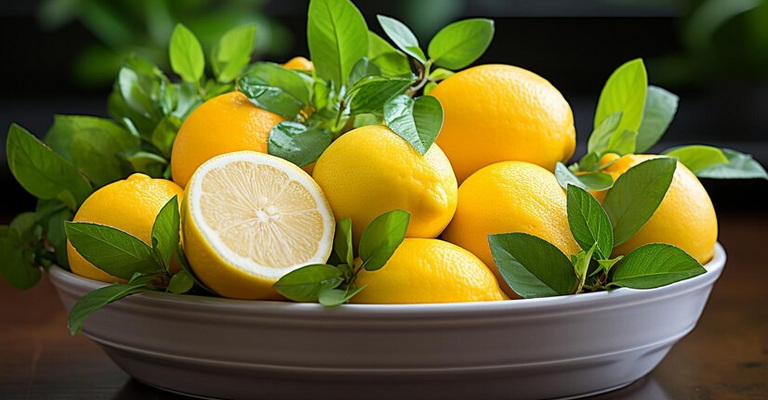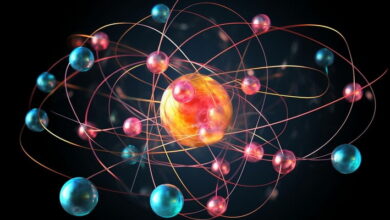Understanding Acids and Bases

From our bodies to our Earth’s oceans and minerals, acids and bases play a crucial part in our lives and the environment around us. If you have tasted lemon juice or washed your hands with soap, you’ve experienced acids and bases. Scientists define substances as acids, bases (sometimes termed alkali) or neutral, depending on qualities such as taste and pH.
What Are Acids and Bases?
Acids
Acids are chemicals that can transfer a proton (H⁺ ion) to another material. This ability to release protons is what distinguishes an acid. Acids have a sour taste, can turn blue litmus paper red, and can react with bases to generate salts and water. They are found in various forms, including:
- Organic Acids: Such as acetic acid (found in vinegar) and citric acid (found in citrus fruits).
- Inorganic Acids: Such as hydrochloric acid (HCl) and sulfuric acid (H₂SO₄), which are used in industrial processes.
Bases
Bases are substances that can absorb a proton or contribute a pair of valence electrons to create a bond. Bases have a bitter taste, slippery feel, and can turn red litmus paper blue. When mixed with acids, they neutralize each other to generate salts and water. Examples of bases include:
- Alkalis: Soluble bases in water, such as sodium hydroxide (NaOH) and potassium hydroxide (KOH).
- Non-Alkalis Bases: Such as ammonia (NH₃), which is not soluble in water but acts as a base in reactions.
Theories of Acids and Bases
Arrhenius Theory
According to Svante Arrhenius, an acid is a substance that increases the concentration of hydrogen ions (H⁺) in an aqueous solution. A base is a substance that increases the concentration of hydroxide ions (OH⁻) in an aqueous solution.
Example:
- Acid: HCl → H⁺ + Cl⁻
- Base: NaOH → Na⁺ + OH⁻
While this theory is useful, it is limited to aqueous solutions and cannot explain acid-base reactions in non-aqueous solvents.
Bronsted-Lowry Theory
A substance that donates a proton (H⁺) in a reaction. A substance that accepts a proton (H⁺) in a reaction. This theory is broader and applies to acid-base reactions in both aqueous and non-aqueous solvents.
Example:
- Acid: HCl (donates H⁺) → Cl⁻
- Base: NH₃ (accepts H⁺) → NH₄⁺
Lewis Theory
A substance that accepts an electron pair to form a covalent bond. A substance that donates an electron pair to form a covalent bond. This theory extends the definition of acids and bases beyond proton transfer to include electron pair interactions.
Example:
- Acid: AlCl₃ (accepts electron pair) + Cl⁻ → AlCl₄⁻
- Base: NH₃ (donates electron pair) + H⁺ → NH₄⁺
Properties of Acids and Bases
Acid Properties
- Taste: Acids have a sour taste. Think of lemon juice or vinegar.
- Reaction with Metals: Acids react with metals like zinc to produce hydrogen gas.
- Example: Zn + 2HCl → ZnCl₂ + H₂
- Reaction with Bases: Acids neutralize bases to form salts and water.
- Example: HCl + NaOH → NaCl + H₂O
- Litmus Paper: Acids turn blue litmus paper red.
- Conductivity: Acids conduct electricity in aqueous solutions due to the presence of H⁺ ions.
Base Properties
- Taste: Bases have a bitter taste. Think of baking soda.
- Feel: Bases feel slippery or soapy.
- Reaction with Acids: Bases neutralize acids to form salts and water.
- Example: NaOH + HCl → NaCl + H₂O
- Litmus Paper: Bases turn red litmus paper blue.
- Conductivity: Bases also conduct electricity in aqueous solutions due to the presence of OH⁻ ions.
The pH Scale
The pH scale measures the acidity or basicity of a solution. It ranges from 0 to 14:
- pH < 7: Acidic solution (more H⁺ ions).
- pH = 7: Neutral solution (pure water).
- pH > 7: Basic solution (more OH⁻ ions).
The pH scale is logarithmic, meaning each unit change represents a tenfold change in acidity or basicity.
Example:
- Lemon juice has a pH around 2 (acidic).
- Baking soda solution has a pH around 9 (basic).
Acid-Base Reactions
Acid-base reactions, also known as neutralization reactions, involve the transfer of protons between reactants. Here are a few key types of acid-base reactions:
1. Neutralization Reaction
When an acid reacts with a base, they neutralize each other to form water and a salt.
Example: HCl+NaOH→NaCl+H2O
2. Buffer Solutions
Buffers are solutions that resist changes in pH when small amounts of acid or base are added. They consist of a weak acid and its conjugate base, or a weak base and its conjugate acid.
Example: A common buffer solution is acetic acid (CH₃COOH) and sodium acetate (CH₃COONa).
3. Titration
Titration is a technique used to determine the concentration of an acid or base in a solution by adding a solution of known concentration until the reaction reaches the equivalence point.
Example: In an acid-base titration, a base like NaOH is added to an acid like HCl until the pH reaches 7.
Applications of Acids and Bases
Industrial Applications
- Acids: Sulfuric acid is used in battery manufacturing and fertilizer production. Hydrochloric acid is used for cleaning metal surfaces.
- Bases: Sodium hydroxide is used in soap making and in the paper industry. Ammonia is used as a household cleaner and in agriculture.
2. Biological Systems
- Acids: Gastric acid in the stomach helps digest food.
- Bases: Bicarbonate ions in the blood help maintain pH balance.
3. Environmental Science
- Acids: Acid rain, caused by sulfuric and nitric acids, affects ecosystems and structures.
- Bases: Lime (calcium carbonate) is used to neutralize acidic soils and water.
4. Everyday Products
- Acids: Citric acid is used as a preservative in foods.
- Bases: Baking soda is used as a leavening agent in baking.
Common Acid-Base Indicators
Indicators are substances that change color depending on the pH of the solution. Common indicators include:
- Litmus Paper: Turns red in acid and blue in base.
- Phenolphthalein: Colorless in acid and pink in base.
- Methyl Orange: Red in acid and yellow in base.
Difference between Acids and Bases
| Acids | Bases |
| Acid gives off hydrogen ions when dissolved in water. | Bases give off hydroxyl ion when dissolved in water. |
| It turns blue colour litmus paper into red. | It turns red colour litmus paper into blue. |
| It has a sour taste. | It has bitter taste and soapy to touch. |
| Its pH value ranges from 1 to 7. | Its pH value ranges from 7 to 14. |
| Example: HCl, H2SO4 etc. | Example: NaOH, KOH etc. |
Weak Acids and Bases
Weak acids and bases are only partially ionized in their solutions, whereas strong acids and bases are entirely ionized when dissolved in water. Some common weak acids and bases are mentioned here. Furthermore, weak acids and bases are very prevalent, and we encounter them often both in the academic difficulties and in ordinary life. The ionization of weak acids and bases is a chemical equilibrium process. The equilibrium principles are fundamental for the knowledge of equilibria of weak acids and weak bases. In this context, you surely recognize that conjugate acids of weak bases are weak acids and conjugate bases of weak acids are weak bases.
Characteristics of Weak Acids:
- Partial Ionization: Weak acids only partially dissociate into H⁺ ions and their conjugate base in aqueous solutions.
- Equilibrium: They establish a dynamic equilibrium between the undissociated acid and the ions formed.
- Lower Conductivity: Due to partial ionization, weak acids conduct electricity less efficiently than strong acids.
- pH Level: Weak acids have a higher pH compared to strong acids at the same concentration, indicating they are less acidic.
Examples of Weak Acids:
- Acetic Acid (CH₃COOH): Found in vinegar, this acid is used in food preservation and flavoring.
- Citric Acid (C₆H₈O₇): Present in citrus fruits like lemons and oranges, it’s used as a natural preservative and flavor enhancer.
- Carbonic Acid (H₂CO₃): Formed in carbonated drinks and also present in the blood.
- Formic Acid (HCOOH): Found in ant stings and used in various industrial processes.
Characteristics of Weak Bases:
- Partial Ionization: Weak bases only partially produce OH⁻ ions and their conjugate acids in aqueous solutions.
- Equilibrium: They establish an equilibrium between the base and the hydroxide ions it generates.
- Lower Conductivity: Due to partial ionization, weak bases are less conductive compared to strong bases.
- pH Level: Weak bases have a lower pH compared to strong bases at the same concentration, indicating they are less basic.
Examples of Weak Bases:
- Ammonia (NH₃): Commonly used in cleaning products and fertilizers.
- Methylamine (CH₃NH₂): Used in pharmaceuticals and as a chemical reagent.
- Pyridine (C₅H₅N): A solvent and base used in organic chemistry.
- Hydrofluoric Acid (HF): An industrial chemical used in etching and cleaning.
Conjugate Acids and Conjugate Bases
In the field of chemistry, the notions of conjugate acids and conjugate bases are crucial for understanding acid-base reactions. These words are fundamental to the Bronsted-Lowry acid-base theory and provide insights into how acids and bases interact. This comprehensive guide will cover what conjugate acids and bases are, how they connect to each other, and their relevance in numerous chemical processes.
Conjugate Acid
Definition: A conjugate acid is the species formed when a base accepts a proton (H⁺) during a chemical reaction. Essentially, it’s the product that results when a base gains a hydrogen ion.
Characteristics of a Conjugate Acid:
- Formation: Formed when a base accepts a proton.
- Proton Donor: Can donate a proton in a reaction, acting as an acid.
- Charge: The conjugate acid has one more proton than the base, often resulting in a positive charge compared to the base.
Example: In the reaction where ammonia acts as a base:
NH3+H+→NH4+
Here, NH₄⁺ (ammonium ion) is the conjugate acid formed from NH₃ (ammonia).
Conjugate Base
Definition: A conjugate base is the species that remains after an acid donates a proton during a chemical reaction. It is the product that results when an acid loses a hydrogen ion.
Characteristics of a Conjugate Base:
- Formation: Formed when an acid donates a proton.
- Proton Acceptor: Can accept a proton in a reaction, acting as a base.
- Charge: The conjugate base has one less proton than the acid, which often results in a negative charge compared to the acid.
Example: In the reaction where hydrochloric acid acts as an acid:
HCl→Cl−+H+
Here, Cl⁻ (chloride ion) is the conjugate base formed from HCl (hydrochloric acid).


